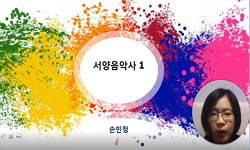희곡은 무대 공연을 염두에 두고 극적 관습에 따라 창작되어 연극으로 완성된다. 이는 희곡이 텍스트의 구조적 완결성인 문학성은 물론 공연으로 전이될 가능성인 연극성을 두루 포함하고 ...
http://chineseinput.net/에서 pinyin(병음)방식으로 중국어를 변환할 수 있습니다.
변환된 중국어를 복사하여 사용하시면 됩니다.
- 中文 을 입력하시려면 zhongwen을 입력하시고 space를누르시면됩니다.
- 北京 을 입력하시려면 beijing을 입력하시고 space를 누르시면 됩니다.

문자 텍스트를 넘어 공연 텍스트로, 희곡 지시문 읽기 ― 비언어적 청각 기호 음악·음향을 활용한 희곡 읽기 방법론 ― = Reading Stage Directions Beyond Textual Discourse as Dramatic Texts ― A Methodology for Reading Play Using Non-verbal Auditory Signifiers, Music and Sound ―
한글로보기https://www.riss.kr/link?id=A108913590
- 저자
- 발행기관
- 학술지명
- 권호사항
-
발행연도
2023
-
작성언어
-
-
주제어
희곡 ; 독자 ; 문학성 ; 연극성 ; 지시문 읽기 ; 비언어적 ; 청각 기호 ; 음악 ; 음향 ; play ; reader ; literary lnclination ; theatricality ; reading stage directions ; non-verbal ; auditory signs ; music ; sound
-
KDC
800
-
등재정보
KCI등재
-
자료형태
학술저널
- 발행기관 URL
-
수록면
175-202(28쪽)
- 제공처
-
0
상세조회 -
0
다운로드
부가정보
국문 초록 (Abstract)
희곡은 무대 공연을 염두에 두고 극적 관습에 따라 창작되어 연극으로 완성된다. 이는 희곡이 텍스트의 구조적 완결성인 문학성은 물론 공연으로 전이될 가능성인 연극성을 두루 포함하고 있음을 의미한다. 그러나 대부분 희곡은 소설과 별 차이 없이 문학성을 중심으로 읽혀져 왔으며, 이에 본고는 희곡 향유 방식에 관심을 두고 연극성을 중심으로 극 언어 중 지시문 읽기를 제안하였다.
현대 희곡사 흐름에 따라 <병자삼인>을 시작으로 대표적인 사실주의 희곡과 반사실주의 희곡 몇 편을 뽑아 읽고, 지시문에 삽입된 음악·음향이 함축하고 있는 감정들을 가려내어 환기하였다. 그리고 자연음과 인공음, 배경음과 목적음, 내재음과 외재음, 인사운드와 오프사운드로서 극 효과를 높이는 음향효과에 집중하여 희곡의 시작과 끝, 장면과 장면 사이, 장면 안에서의 몇 가지 기능들을 확인하였다. 첫째, 음악·음향은 장소를 설정하고 공간을 분할하여 극 공간을 구조화한다. 둘째, 음악·음향은 기분과 분위기를 조성하여 장면 전환과 막 내림의 기능을 한다. 셋째, 음악·음향은 압축력을 지니고 앞으로 일어날 사건을 암시한다. 넷째, 음악·음향은 등장인물의 성격을 제시한다. 다섯째, 음악·음향은 주제를 암시함으로써 작가 사상의 매체가 된다. 이로써 지시문에 삽입된 음악·음향은 대사에 비해 과소하지만 대사와 마찬가지로 선택되고 조정된, 연극성을 가장 잘 부각시켜주는 비언어적 청각 기호로서 극에 영향을 끼친다.
희곡 지시문 읽기는 독자가 희곡을 무대 위 공연처럼 보고 듣기 위해 상상력을 어떻게 사용할 수 있을지에 대한 한 방법으로써 의미를 지닌다. 그것은 주의하여 읽지 않으면 드러나지 않거나 그대로 묻혀버릴 수 있는 희곡의 빈틈을 독자의 감각적 지각으로 채우는 입체적 공간화로서 희곡 읽기이다.
다국어 초록 (Multilingual Abstract)
Plays are written with the idea of being performed on stage, following dramatic traditions and coming together as a complete theatrical production. This implies that a play isn’t just about its literary structure but also about the potential for bei...
Plays are written with the idea of being performed on stage, following dramatic traditions and coming together as a complete theatrical production. This implies that a play isn’t just about its literary structure but also about the potential for being acted out on stage. However, most plays have been traditionally read more like literature, similar to novels. In this regard, this paper suggests that plays can be read focusing on the stage directions in plays, emphasizing their theatrical aspects.
In line with the trends in contemporary playwriting history, I began by reading representative examples of both realistic and anti-realistic plays, starting with “Three Sick People”. I examined the emotions implied by the music and sound embedded in the stage directions. Additionally, I focused on the auditory effects that enhance the dramatic impact, such as natural sounds versus artificial sounds, background sounds versus foreground sounds, intrinsic sounds versus extrinsic sounds, and on-stage sounds versus off-stage sounds. I paid particular attention to how these sound effects contribute to the overall effectiveness of the play, assessing their functions at the beginning and end of the play, between scenes, and within individual scenes. Firstly, music and sound help set the stage and structure the theatrical space. Secondly, they create mood and atmosphere, playing a role in scene transitions and curtain closings. Thirdly, they carry tension, hinting at future events. Fourthly, they hint at character traits. Fifthly, they serve as a medium for the author’s ideas by implying themes. In this way, the music and sound in stage directions, while less prominent than dialogue, are carefully chosen and adjusted. They act as non-verbal auditory cues that significantly contribute to the theatricality of the play, similar to dialogue.
Reading stage directions in a play is a way for readers to use their imagination to experience the play as if it were being performed on stage. It holds meaning as a method to bring the text to life in three-dimensional space, using the reader’s sensory perception to fill in gaps in the text that might not be apparent or might be overlooked if not read carefully.
동일학술지(권/호) 다른 논문
-
과학 에세이 쓰기의 과정과 피드백 효과 ― 글쓴이의 체험과 가치관 드러내기 ―
- 현대문학이론학회
- 권미란 ( Kwon Mi-ran )
- 2023
- KCI등재
-
망명자 구보 씨의 혁명 백서, 『신곡』 ― 『소설가 구보씨의 일일』과 『신곡』의 상호텍스트성 연구 ―
- 현대문학이론학회
- 전두영 ( Jeon Dooyoung )
- 2023
- KCI등재
-
위험의 일상화와 재난투어 서사 ― 『밤의 여행자들』, 「므레모사」, 「재해지역 투어버스」를 중심으로 ―
- 현대문학이론학회
- 엄미옥 ( Eom Mi-ok )
- 2023
- KCI등재
-
공백으로서 ‘민족어’와 ‘낭만’ ― 1930년대 임화와 박용철을 중심으로 ―
- 현대문학이론학회
- 김미미 ( Kim Mi-mi )
- 2023
- KCI등재




 KISS
KISS






